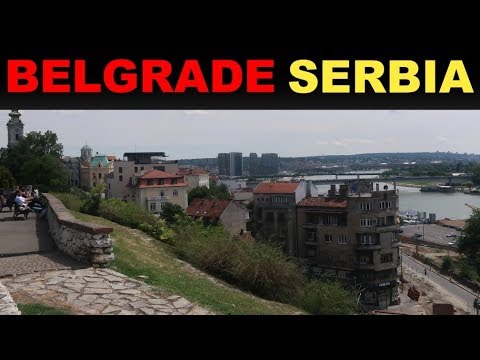
Belgrade, the capital city of Serbia, stands as a testament to resilience and new beginnings. With its vibrant culture, historic architecture, and an ever-growing café scene, Belgrade is increasingly recognized as a must-visit destination in Europe. For those planning a trip in 2019, here’s your essential guide to discovering this dynamic city.
**Historical Insights and Cultural Richness**
Start your journey at Kalemegdan Park and the adjoining Belgrade Fortress. This significant historical complex offers panoramic views of the confluence of the River Sava and Danube. Inside the fortress walls, you’ll find museums and ancient ruins that tell stories dating back over 2000 years.
Step out from history into the heart of Serbian culture at the National Museum in Belgrade, which reopened in 2018 after extensive renovations. The museum hosts an array of art ranging from prehistoric idols to masterpieces by artists like Rembrandt and Matisse.
**Vibrant Lifestyle and Nightlife**
Belgrade is nicknamed “the city that never sleeps.” Nightlife here is bustling with countless bars, clubs, and floating river clubs known as ‘splavs’. Whether you prefer jazz bands or electronic dance music, Belgrade has something for every taste. Don’t miss out on Skadarlija street either – a bohemian quarter reminiscent of Montmartre in Paris where live music pours out from traditional taverns known as “kafanas”.
**Culinary Delights**
Serbian cuisine is hearty and flavorful. In Belgrade, you can savor everything from traditional dishes like Ćevapi (grilled minced meat) and Sarma (cabbage rolls) to international fare. For an authentic experience visit Question Mark (?), the oldest kafana in Belgrade, or enjoy a scenic dinner at one of many restaurants overlooking the rivers.
**Shopping and Leisure**
Knez Mihailova Street is a bustling pedestrian zone lined with historic buildings now housing shops ranging from international brands to local art galleries. For leisure enthusiasts looking for local products or souvenirs, Zeleni Venac market offers fresh produce alongside handmade items.
**Day Trips**
For those looking to explore beyond Belgrade’s urban life, take a day trip to Novi Sad or spend some time at Avala mountain just outside the city – both easily accessible by public transport.
**Practical Tips for Travelers**
– **Currency**: Serbia uses its own currency – Serbian Dinar (RSD). While euros might be accepted informally among locals for larger transactions such as apartment rentals or car purchases, it’s best to carry dinars for everyday expenses.
– **Transportation**: Public transport in Belgrade includes buses, trams, and trolleys. Tickets can be bought from kiosks marked ‘Traffic’. Taxis are also plentiful; ensure it’s licensed if you hail one off the street.
– **Language**: Serbian is the official language but English is widely spoken especially by younger generations.
– **Safety**: Generally safe for tourists but standard precautions apply like anywhere else regarding personal belongings particularly on crowded public transport.
Whether it’s exploring ancient fortresses or enjoying vibrant nightlife along riverbanks; relishing local Balkan flavors or strolling through bustling streets lined with European architecture – visiting Belgrade provides an experience rich with history blended seamlessly into modernity’s colorful lifestyle making it one unforgettable destination!
